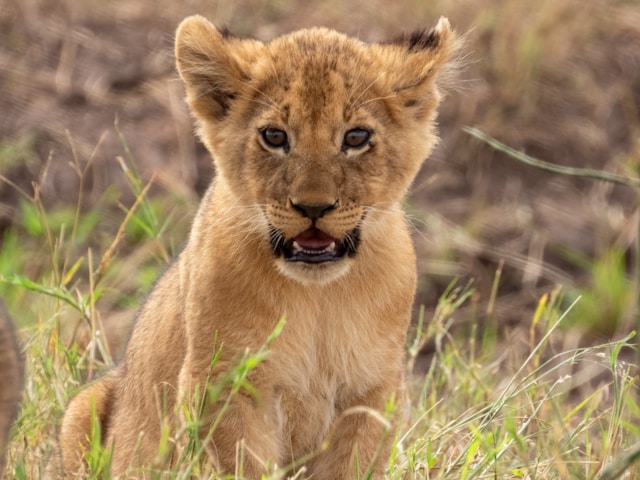Tanzania has one of the greatest numbers of bird species in Africa, with over 1200 species identified so far, representing 75 families, thanks to its diverse habitats and altitudinal ranges. It is estimated that over 80% of the population breeds in the country.
The majority of migratory species arrive near the end of the year, during the northern hemisphere’s winter. Swallows, nightingales, and whitethroats, for example, are common British summer migrants who must navigate or avoid the unfriendly Sahara. The size of these birds’ migratory is incredible when witness over 6 billion birds migrate each year. The following sections detail some of the more frequently seen and easily identified species. For a full list, consult this website.
Large Size Walking birds
On safari, a variety of huge terrestrial (or partly terrestrial) birds can be spotted on a routine basis. The flightless ostrich can be seen in the extreme north in dry, wide grasslands and semi-desert, such as Tarangire, Ngorongoro, Serengeti, and the area around Lake Natron. It’s the world’s largest bird, standing up to 2.5 meters tall, and one of the fastest runners when necessary. The females are all the same color, but the approaching males have hairless pink necks and thighs that dazzle the ladies.
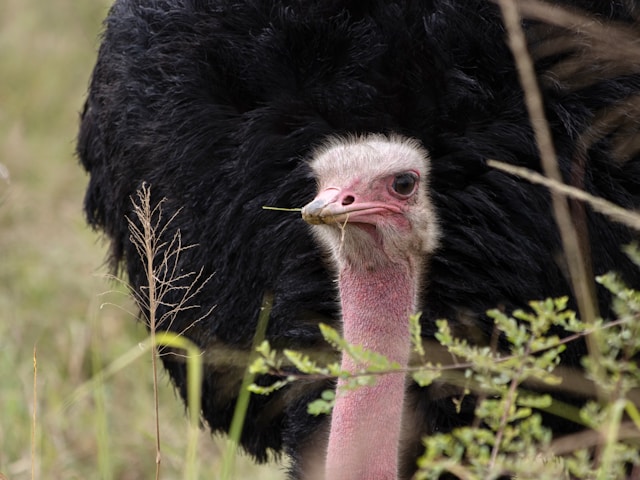
They don’t put their head in the ground, contrary to popular notions, although they do hide them in their plumage while sleeping. The huge, long-tailed secretary bird is very easily recognizable, and came to be known from the feathers on its head that resemble pens placed behind the ears, while its “bestockinged” legs and strolling walk are also indicative. Normally secretary birds feed on beetles, grasshoppers, reptiles, and rodents and are frequently observed in pairs in dry, open shrubs and forested areas. The crowned crane, with its head capped with a cone array of yellow feathers, is also unusual and exquisite. They can be found grazing in pastures or swampy places, such as Lake Victoria.
The ground hornbill is another popular species. This magnificent species, which dwells in open land and is by far the largest hornbill, is black with a red face and wattles and resembles a turkey. It’s not unusual to see couples, or even groups, of ground hornbills running through the brush in search of tiny wild animals. They build their nests in big trees branches and even amongst stones. The Maasai claim that their songs sound like people talking. The world’s heaviest flying bird, the greyish-brown Kori bustard, is also popular, though it likes to stay on the ground and hence is hard to spot. Males average 12kg, with the heaviest reaching 20kg.
Several kinds of guinea fowl are not true walking birds, although they are often seen in groups on the land before dispersing ahead of your progress in a low swooping flight. These game birds have a rich covering of royal blue feathers, often speckled white, and a fairly funny and vividly colored head.
Flamingos and ibises
The very first glimpse of flamingos in a sea of pink on a soda-encrusted Rift Valley lake — astounds many tourists (Lake Natron and Lake Manyara are the best places). In Tanzania, there are two types of flamingos: the larger and the lesser flamingo, which can be spotted in groups of tens of thousands or even hundreds of thousands. The lesser flamingo is a smaller, pinker, and darker-billed relative of the larger flamingo. The Rift Valley population, which only nests at Lake Natron, is one of only three populations in Africa with several million members. Birds can depart or return in a short amount of time, depending on a variety of circumstances like the alkalinity of the sea and the existence of algae blooms, making seeing large groups challenging to forecast.
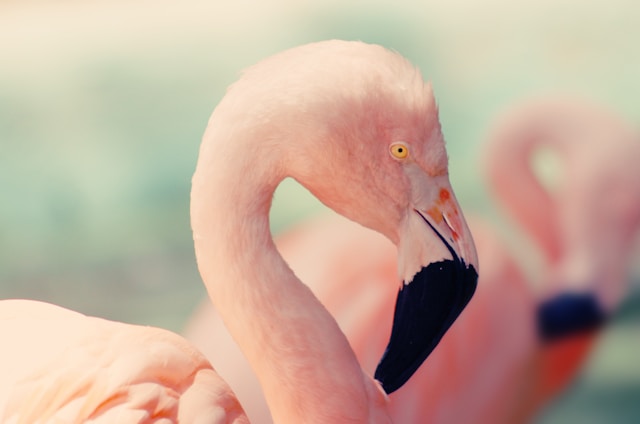
Lesser flamingos eat by filtering floating watery food, primarily blue-green diatom algae, which can be found in large quantities in the Rift Valley’s shallow soda lakes. Greater flamingos can number in the thousands, but they are far fewer than lesser flamingos. They are bottom feeders, sifting tiny creatures and algae. Greater are less migratory than their siblings, although they are more inclined to migrate out from the Rift Valley lakes to smaller bodies of water, including the seashore.
The sacred ibis (swan birds with bottom bills) is the most extensively distributed ibis species, found near water and human habitation. It features a white body with a black head and throat, as well as black wings ends. The hadada ibis, a bird of northern Tanzania’s woodland waterways, farmed fields, and parks, is also common to be found. It has brown wings with a green-bronze sheen and makes a loud call when flying.
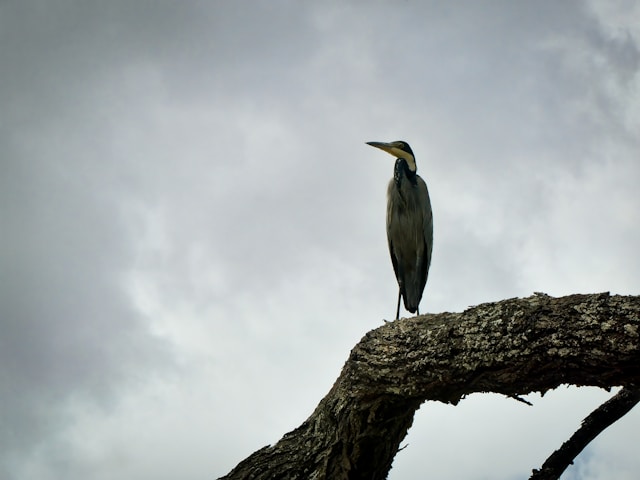
Water Birds
Aside from the excessively salty lakes, most big lakes and rivers sustain various migratory birds species like ducks, geese, herons, storks, and egrets. The black-headed heron is the most frequent big heron, and it can often be spotted far from water. The black heron, which is mostly grey with a black head and legs, can be observed along coastal streams and wetland coasts: when fishing, it capes its head with its wings, reducing direct reflection from the water and enabling the bird to view its catch more easily.
The hammerkop, also known as the hammer-headed stork, is a brown heron-like bird with a strong bill and brown feathered crown that gives it an upper, slightly ancient impression in flying, similar to that of a small pterodactyl. Hammerkops are found close to the water and create huge, visible nests that are frequently used by various creatures such as owls, geese, ducks, monitor lizards, and snakes. The saddlebill is a popular stork with an exquisite red bill with a yellow “saddle” and black patterning.
Predators and carrion eaters Birds
Kites, vultures, eagles, harriers, hawks, and falcons dominate in Tanzania’s bird population. Over 400 species have been identified throughout the country, with several of them being impossible to overlook. The bateleur, an acrobatic eagle easily recognizable by its silver wings, black body, and short and thick dimensions, and the unutterably gorgeous black-and-white African fish eagle, typically spotted sitting in trees viewing the water, are two eagles strongly associated with East Africa. 6 breeds of vulture can be found flying above Tanzania’s plains like Serengeti in pursuit of a carcass. All of the kinds might coexist, and these raptors can fly large miles to feed.
The key variations in feed intake are that the lappet-faced vulture rips apart corpses, the African white-backed vulture feeds solely on internal parts, and the hooded vulture eats the bones. Another simple to detect bird is the marabou stork, which stands up to 1.2m tall and has a bald head, long pointed cone beak, and hanging pink throat bag. The marabou stork, unlike other storks, flies with its head and neck contracted and is frequently spotted in arid places, including settlements, where it feeds on small animals, carcasses, and trash. You might observe them resting in treetops if you’re adventurous.
Birds and turacos flee
Africa is only home to these unique and related species. Many go-away birds and turacos have standard sizes body with long tails and small rounded wings. They are not great flyers, but they can move quickly across trees and through plants. Numerous species have crests and are colorful. Turacos are green or violet in color and are only found in wooded and forested settings around national parks in Tanzania. The highly widespread and popular white-bellied go-away bird (go-aways are named from their sound) is a white or grey-colored open-country species.
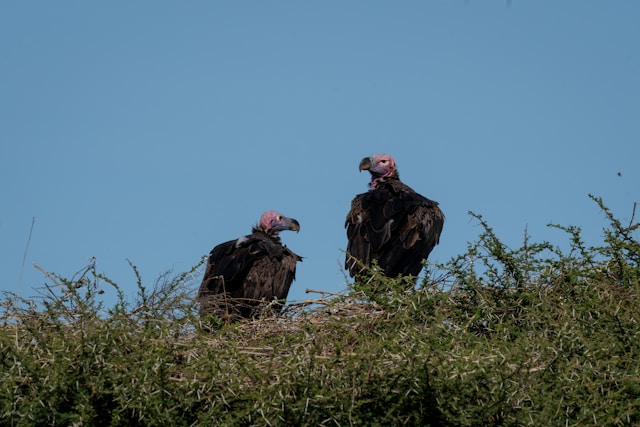
Hornbills
Hornbills have black and white feathers and are called for their long, thick bills, which are topped by a casque or bone crown. Their flying comprises a sequence of flaps and glides that interchange. Hornbills may be heard before they can be seen in flight, with the beaten wings generating a “whooshing” sound as wind flows through the flying feathers. Several kinds have naked skin on their faces and throats, as well as around their eyes, and their bills and casques are often brilliantly colored, varying with the maturity of the bird. The majority of hornbills are omnivores, however, they primarily eat fruit.
The silvery-cheeked and red-billed hornbills, for example, are frequent open-country birds. Hornbills have unusual breeding behaviors in which the male imprisons the female in a barren tree, creating a hole through which he feeds her while she incubates and rears the young.
Rollers, shrikes, and kingfishers
Rollers are a species of brightly colored African bush birds that rest on exposed shrubs and electric wires. Their name comes from their remarkable courting flights, which consist of a quick dive with a rolling and rocking motion and noisy calls. Many have a sky-blue underbelly and a sandy-colored back, while several species have lengthy tail streamers. The lilac-breasted roller is a rather frequent and noticeable species.
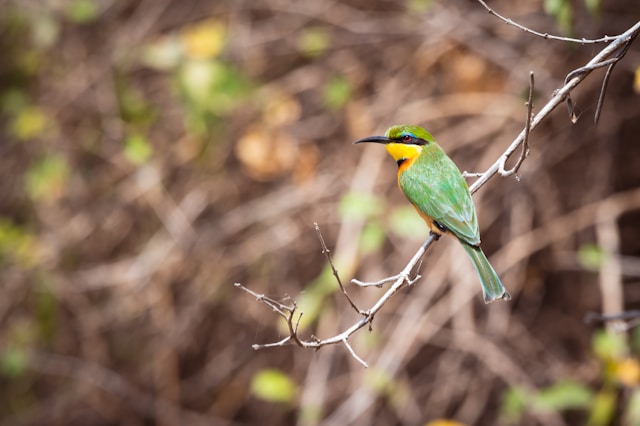
Shrikes can be found all around Tanzania. They are vicious predators with sharply hooked beaks who prefer to sit on high perches and eat insects, reptiles, and small birds. The Uluguru Bush-shrike, which can only be found in the Uluguru Mountains, is particularly unique.
Tanzania is home to a dozen different species of colorful kingfishers, varying in size from the small African pygmy kingfisher, which depends on insects and lives near bodies of water, to the shy fish-eating, a gigantic kingfisher, which lives in woodland waterways in the country’s west.
Numerous species prefer to feed insects rather than fish, and they are frequently observed positioned higher in branches or on open posts in the jungle, waiting to pounce on passing prey. The malachite kingfisher is one of the most common, and it catches small fish by whacking them against branches and swallowing them headfirst.
Sunbirds are lively, colorful birds that feed on nectar from plant species. Over forty varieties have been identified in Tanzania, though several are restricted to certain ecological types. Males are usually vividly colored and easy to spot, but plenty of the drabber females take close scrutiny to recognize.
The black and iridescent-green Amani sunbird, which can be spotted in small groups at Amani Nature Reserve, is a relatively rare species. One of three kinds of starlings, which are prevalent in wilderness areas and are frequently seen foraging on the ground, belongs to the beautiful orange and blue starlings. The superb starling is the most common, with sightings ranging from isolated national parks to Arusha gardens, and is often extremely friendly. The white ring over its orange breast helps to identify it.
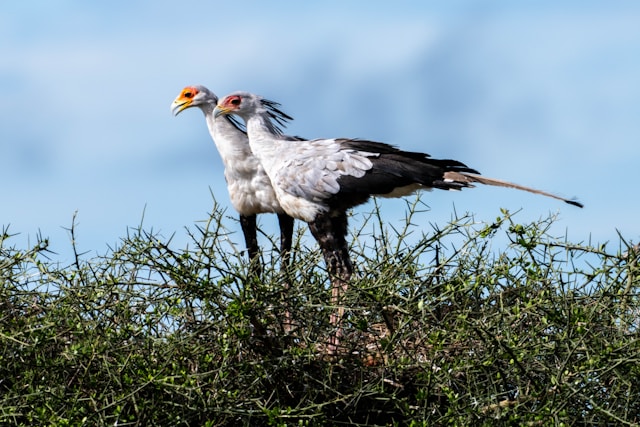
Whydahs, also known as widowbirds, are related to finches and have prodigiously long tails that mimic sorrow crowns worn in the Ancient era. They’re also brood parasites, laying their eggs in the nests of other birds, which may or may not be related. To attract ladies, males undertake an unusual bouncing display flight.
Weavers are one of Tanzania’s most common birds. Males are simple to identify because they have bright yellow or yellow-and-black plumage, but females have sparrow-like plumage. The many species are identified by their range, preferred environment, and the shape and size of their incredible woven nests, which, because weavers live in groups, can entirely transform the appearance of a tree.
The unusual Kilombero weaver may be found in central Tanzania’s Kilombero river; the Usambara weaver can be found in the Usambara Mountains, and the Rufous-tailed weaver can be found in Tarangire.
Arrange a birdwatching safari to Tanzania with Jolita Safari to witness many varieties of birds species while learning through our bird expert’s safari guides.



